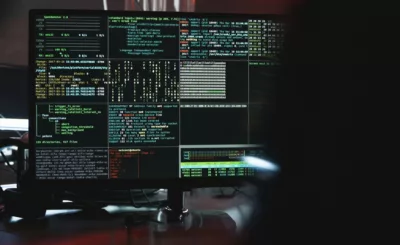Today was my last day at Relevance, pairing again with Stuart Sierra. Along with Alan Dipert, we arrived at a solution for our data woes from yesterday, and deployed it.
The approach we chose exposed a problem with data interpretation when a Clojure-precondition-thrown AssertionError came back to bite us later in the day. By the way, AssertionError, which preconditions throw, is a java.lang.Error, not a java.lang.Exception. Catch it accordingly, especially if you're running these preconditions in a thread pool!
Today may have been the most fast paced day yet. In the morning after the project standup, Alan did some white-boarding with Stuart and me to explain the architecture and requirements of a spike that we spent the rest of the day on.
It's going to be a pretty cool system that integrates with the rest of the client system. The interesting bits include writing to Redis (potentially with a C application) and a web service (in Clojure) that reads from Redis server to provide data to end users.
So Stuart and I started from scratch on a new Compojure app with Clojure 1.2, Leiningen, and redis-clojure. We got set up relatively quickly, and implemented a tiny web service that parses a request to find what to read from Redis, properly handles errors, and returns a reasonable result.
We had ideas about providing several types of web services (HTML, JSON, XML, perhaps even plain text) but for the purposes of the spike, we just used the browser.
I had fully expected Stuart's knowledge of Clojure to be impressive, and I wasn't disappointed. I didn't see too many things I hadn't seen before, but having seen things is different than knowing just when to use them.
There was a new macro and condp that I hadn't seen before, and it seems like a great substitute for cond in situations where all the predicates look very similar.
And if you've ever been frustrated by needing to restart a Clojure process in order to add a jar to the classpath, you'll be excited to know that Stuart is working on an interesting solution involving Nailgun.
It's also been cool to hear a couple of questions Stuart Halloway asked us about Clojure idioms. It's sometimes easy to forget that everybody's human, and the smartest people will often ask for help rather than forge ahead as a lone warrior, and they're better off for it—even when it's just rubber ducking.
On that note, my experience here has been that almost everyone seems to be pairing all the time, and those who aren't pairing are either working on project management or quality assurance type tasks, or have their code reviewed by someone else later on.
My own experience at 8th Light has always been that two heads are better than one, so this was cool to see. Additionally, as I've said before, the developers all seem to be very good at client relations issues, and I discovered today that, as I suspected, Relevance uses its own developers as project managers for all projects.
This seems very noteworthy to me —it's been rare that I've seen a developer as project manager, but it seems to be the rule here. This is also often the case for the QA role.
Certainly there is a lot of testing going on here at both the unit and acceptance test level, but there is often a developer doing QA on other developers' work.
My experience this week was great. I would highly recommend anyone considering doing something like a craftsman swap tour to just do it.
This has been a wonderful experience, and it's easy to see why people like Corey Haines have been such proponents of this sort of thing.
Relevance would be an excellent choice for a visit if you can make it happen—I've learned a lot, and I look forward to bringing more of that back to the team at 8th Light when I get back to Chicagoland.
Many thanks to 8th Light and Relevance for the opportunity to do this!





